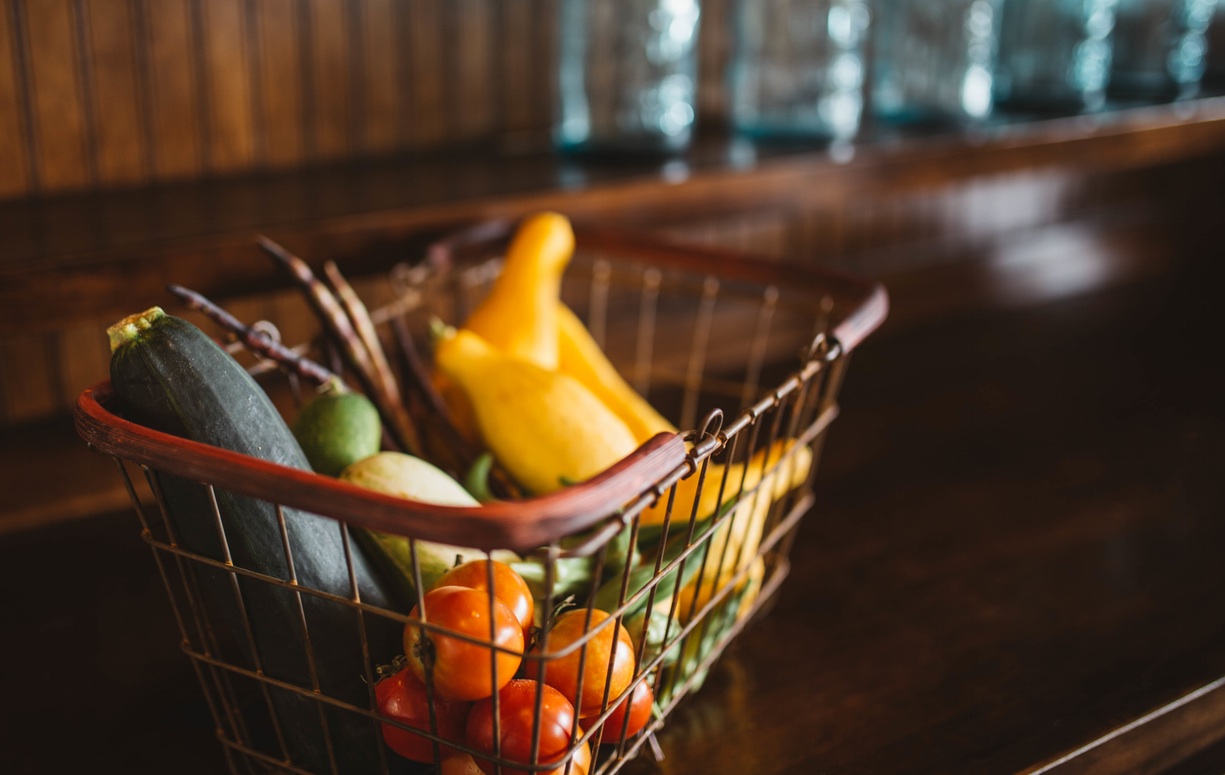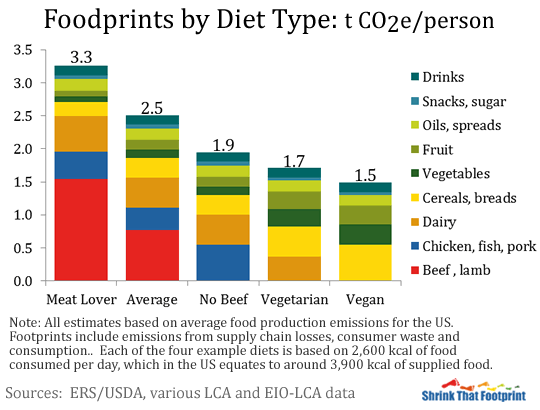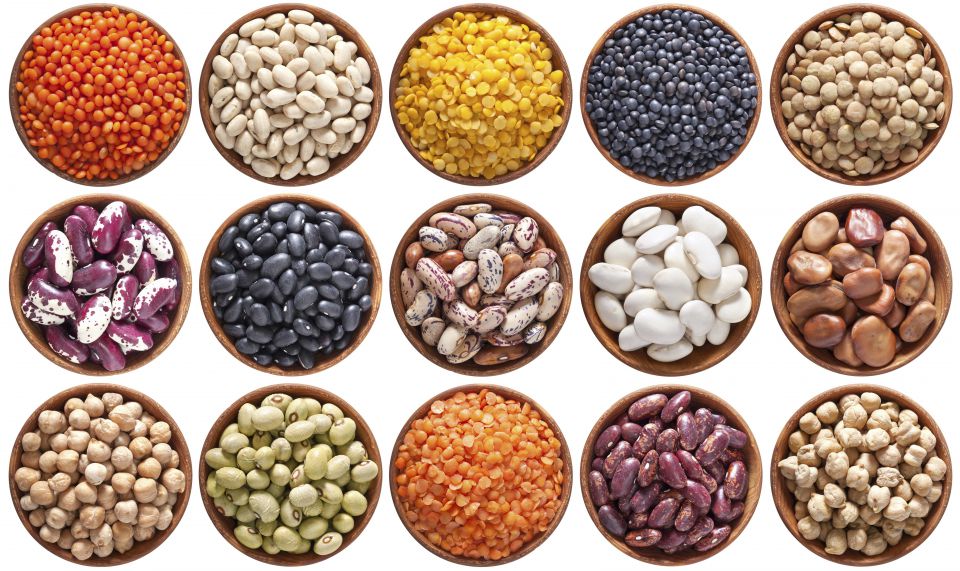
Maybe you’ve been living under a rock for the past decade or so. In which case, you’ve probably missed the trend where people are decreasing their meat consumption, using a Whole Foods Plant Based diet to solve and prevent health problems, and reducing their carbon footprint.
 For those new to the concept of vegetarianism, here’s a common concern: if I cut meat out of my diet, how will I get enough protein?
For those new to the concept of vegetarianism, here’s a common concern: if I cut meat out of my diet, how will I get enough protein?
In America, where we center our diets heavily on protein – steak, pork chop, grilled chicken breasts, or salmon filets, it’s hard to convince people that having too much protein can be negative and that you can get enough protein without meat. However, consider this…
- You don’t need as much protein as you may think. Aside from heredity, blood type, age, physical activity, and other dietary factors, the idea that it’s good to cram as much protein into your body as possible is a myth. The Institute of Medicine and Harvard Medical recommends 0.8 grams of protein per kilogram of body weight, or 15% of your daily caloric intake. For a 140-pound person, that’s 50.4 grams of protein. One cup of diced chicken breast contains 43 grams of protein. Do the math. If you’re trying to build muscle, all that’s needed is an additional 10-14 grams. So, drinking that 80 gram protein shake may be harmful long-term. How can that much protein be bad for you?
- Digesting heavy amounts of protein can lead to health problems. Animal protein is digestive heavy, meaning it takes longer for your body to break it down, releasing more acid into your stomach. That acid is neutralized by calcium, which your body can take from your bones if you don’t have enough available, leading to osteoporosis. It’s tough on your liver and kidneys too – when your body has too much protein, your kidneys have to work to remove it as a waste product. So, how to prevent this problem?
- Vegetables contain protein. This may come as a shock to some people, but animal products are not the only source of protein in the world. Protein can be found in a variety of vegetables, from kale to mushrooms. The UN has named 2016 the Year of Pulses (a fancy word for legumes, or beans), and for good reason – a cup of soybeans contain 28 grams of protein and a cup of lentils at 18 grams.
So what’s the solution? You’ve probably heard it before – a balanced, whole foods diet. Finding the sources of protein that balance the ratio of amino acids that our bodies need in addition to vitamins, minerals, and fiber.
Due to this trend, there is a wealth of resources online for what to buy, what to eat, and how to make it. Forks Over Knives is a great resource that started with a documentary and has grown to a movement. Their website even includes a meal delivery service.
But how does going vegetarian really affect the planet?
 Well, here’s a fun fact: if a four-person family skips steak for one day a week for an entire year, the amount of emissions reduced would be equivalent to taking a car off the road for three months. Shrink That Footprint has broken down five different diets (meat lover, average, no beef, vegetarian, and vegan) to show the average carbon footprint for each diet type. In summary, compared to a meat lover (3.3 tonnes of carbon dioxide emissions), vegans weigh in at almost 1/3 of the emissions rate.
Well, here’s a fun fact: if a four-person family skips steak for one day a week for an entire year, the amount of emissions reduced would be equivalent to taking a car off the road for three months. Shrink That Footprint has broken down five different diets (meat lover, average, no beef, vegetarian, and vegan) to show the average carbon footprint for each diet type. In summary, compared to a meat lover (3.3 tonnes of carbon dioxide emissions), vegans weigh in at almost 1/3 of the emissions rate.
 If you want a more precise break down, the Environmental Working Group does a great job with breaking down the rate of emissions for various products like beef, eggs, and farmed salmon. However, it’s interesting to note that swapping beef to chicken alone can cut down a quarter of emissions.
If you want a more precise break down, the Environmental Working Group does a great job with breaking down the rate of emissions for various products like beef, eggs, and farmed salmon. However, it’s interesting to note that swapping beef to chicken alone can cut down a quarter of emissions.
There’s also an official campaign that you can join called Veganuary, launched in the UK in 2014, where people around the world pledge to eat vegan for January in order to help protect animals, combat the effects of global warming, and feel better. The site contains great recipes, guides for eating out, and product directories.
As a vegan dietary supplement, try Moringa Powder and Kuli Kuli Moringa bars. A single tablespoon of Moringa Powder contains 3 grams of protein and the Crunchy Almond Moringa Bar boasts 5 grams of protein.
Following this trend may end up doing more than just making your waistline happy.
About the Author:
Barbara Lee is an avid lover of traveling, eating local, the environment, motorcycles, and holistic health. With a BS in Psychology and previous work experiences ranging from non-profit legal work to managing a restaurant in San Francisco, Barbara enjoys pursuing new experiences and living life while using the most natural and organic means possible. Some of her most memorable life moments include watching little blue penguins return to their nests in Melbourne and swimming a rift of melted glacier water between tectonic plates in Iceland. For more posts by Barbara, click here!






